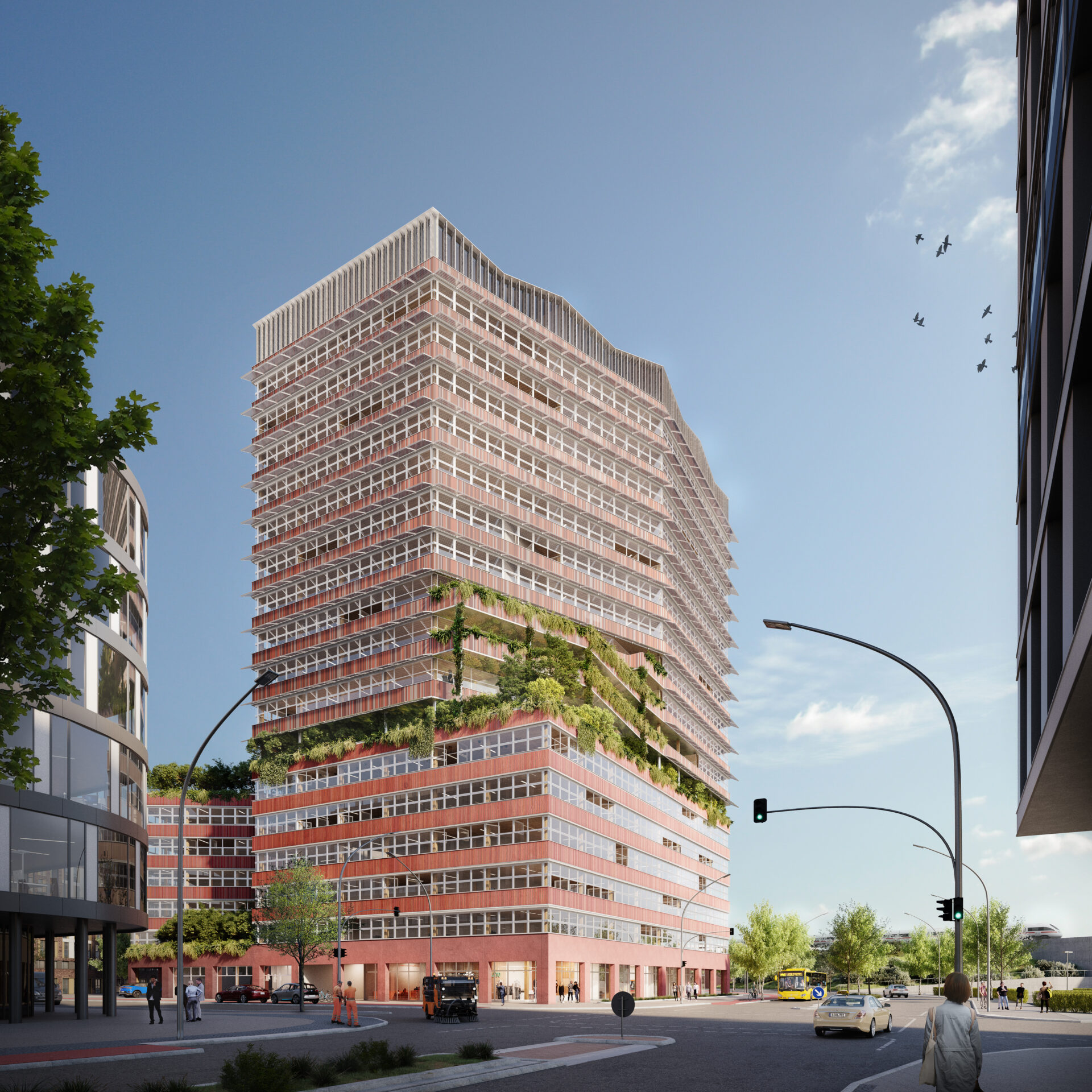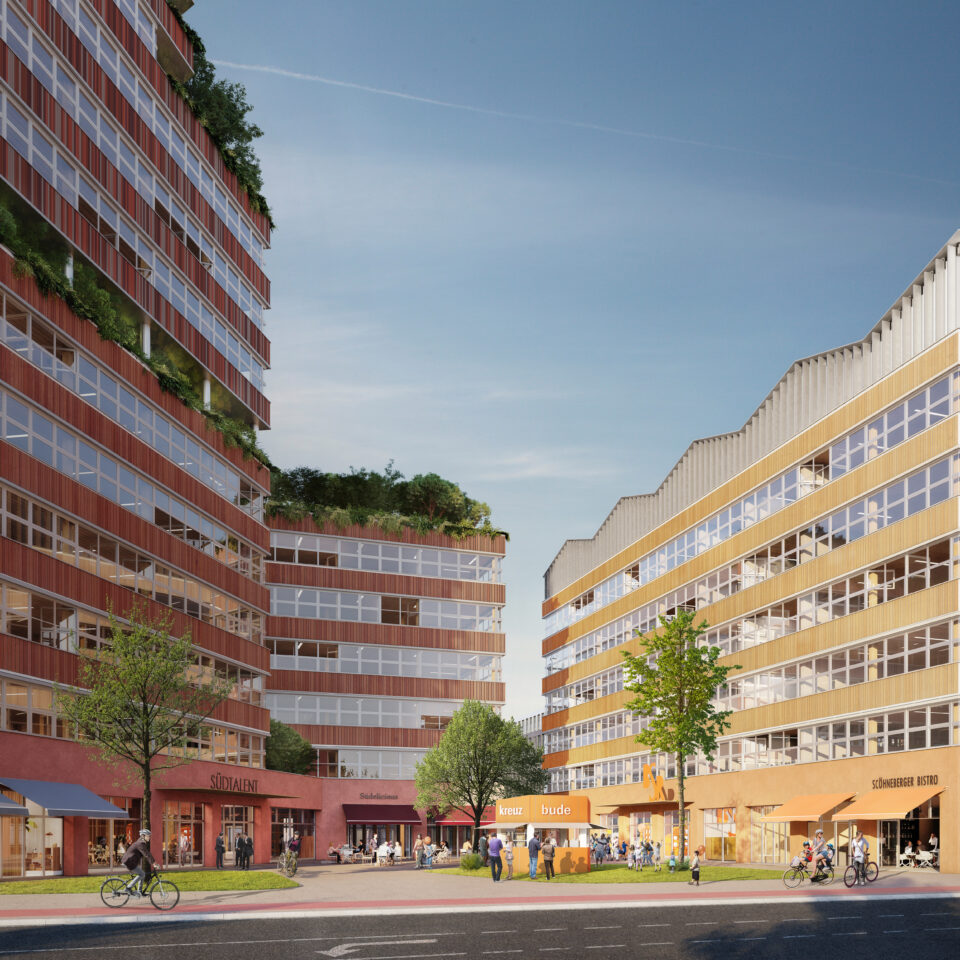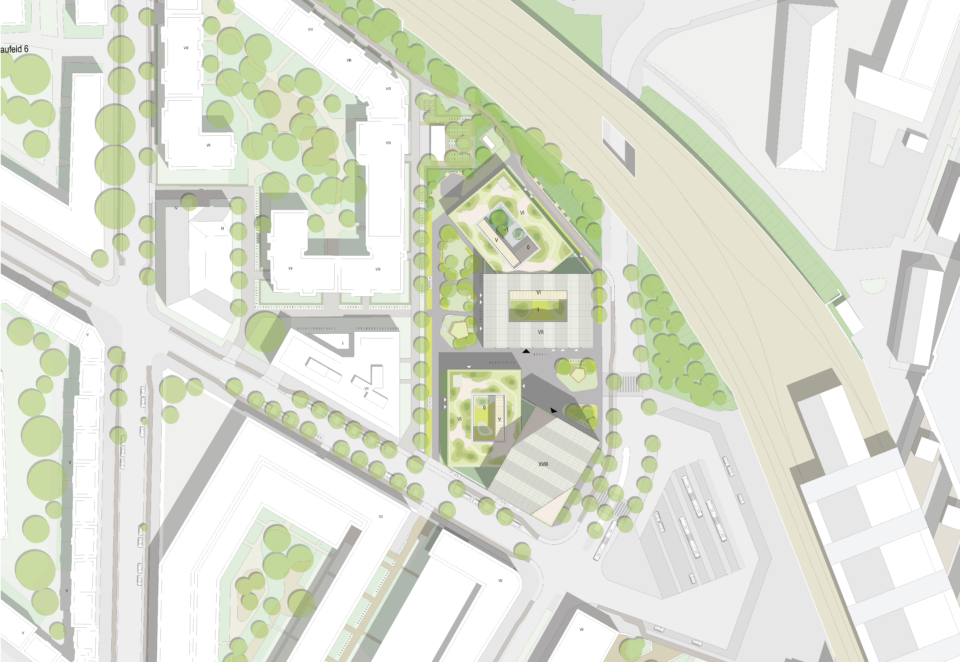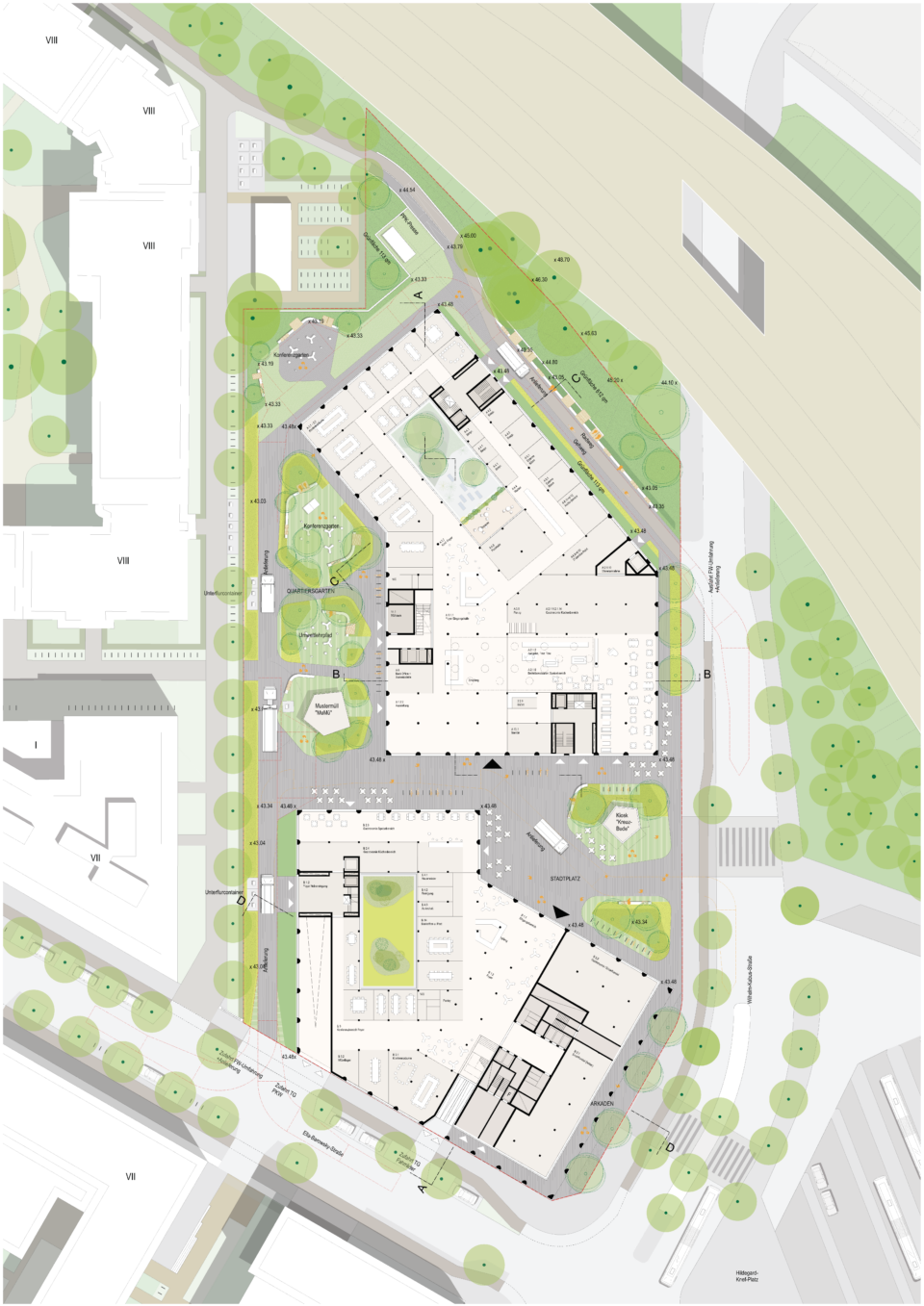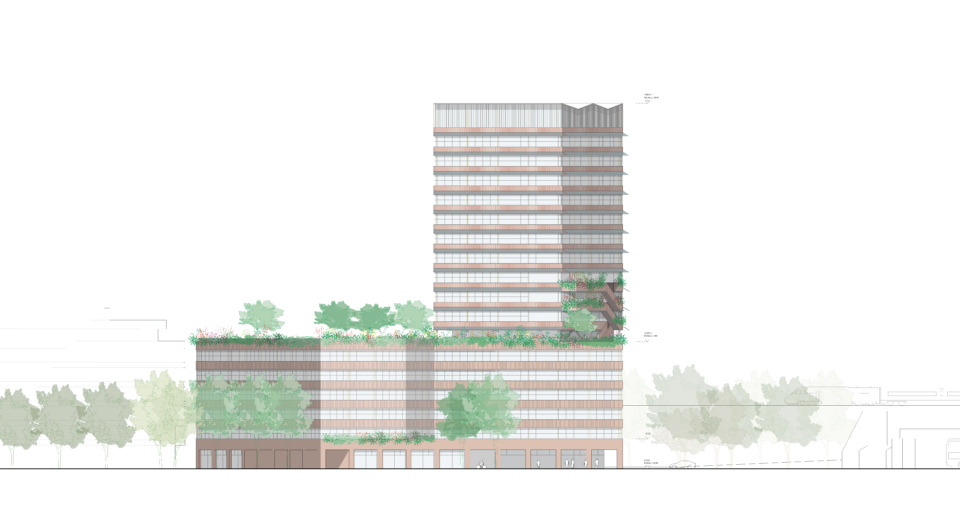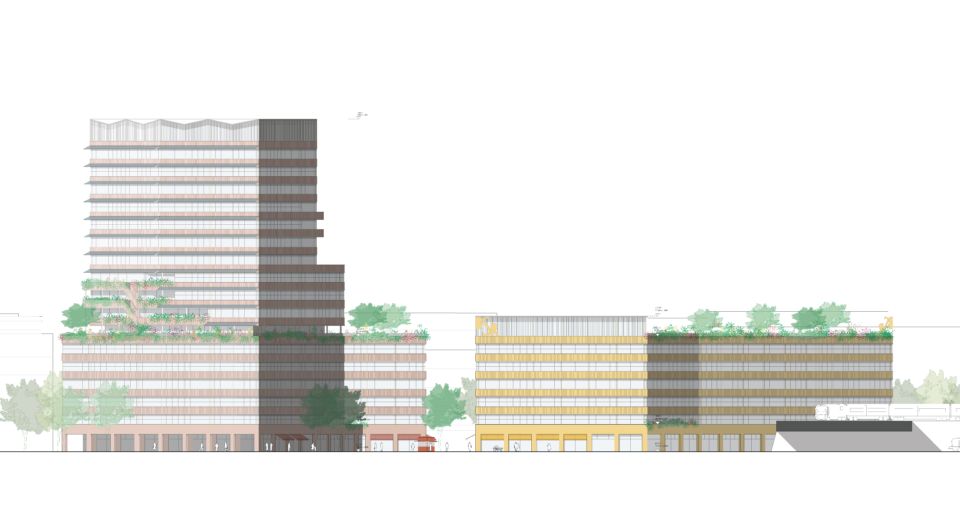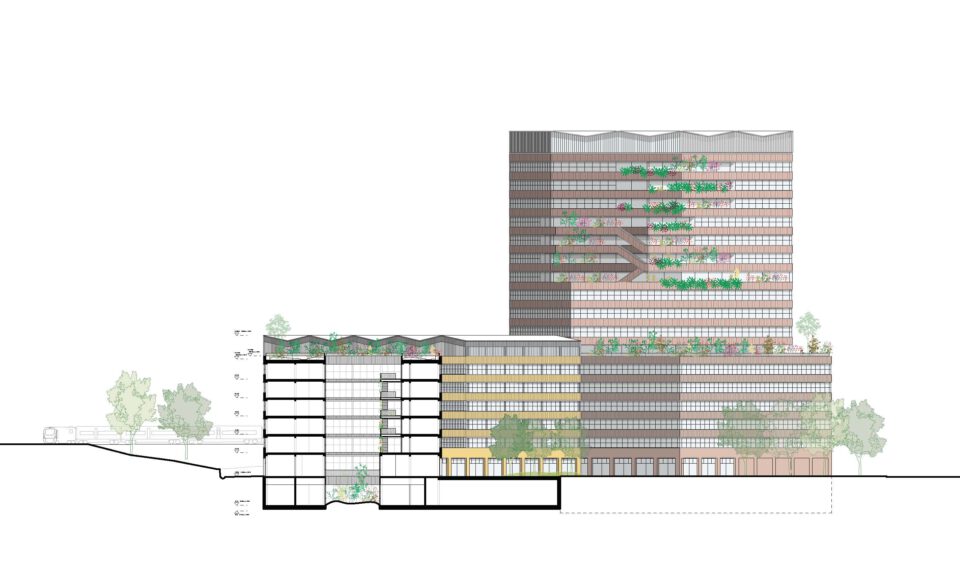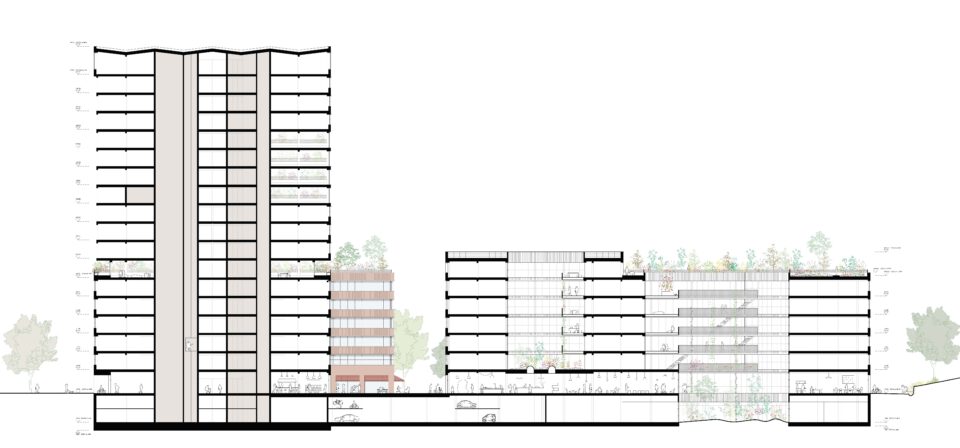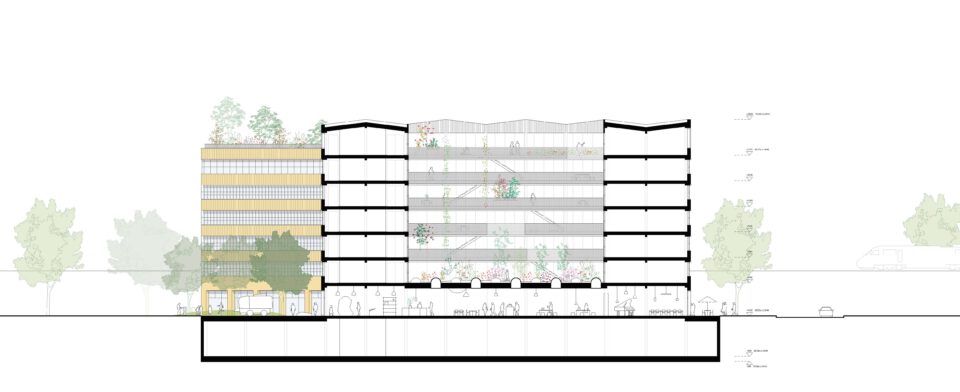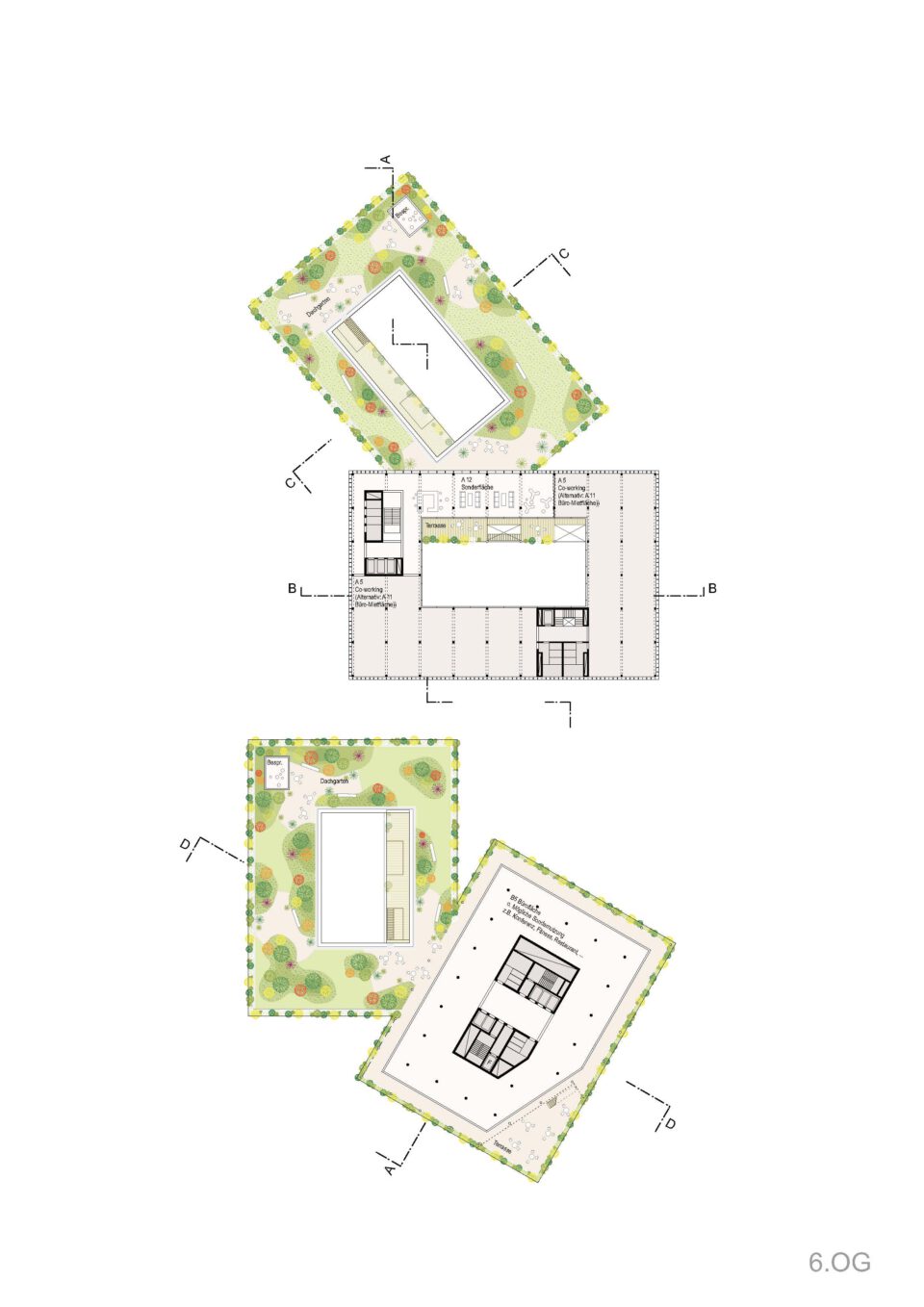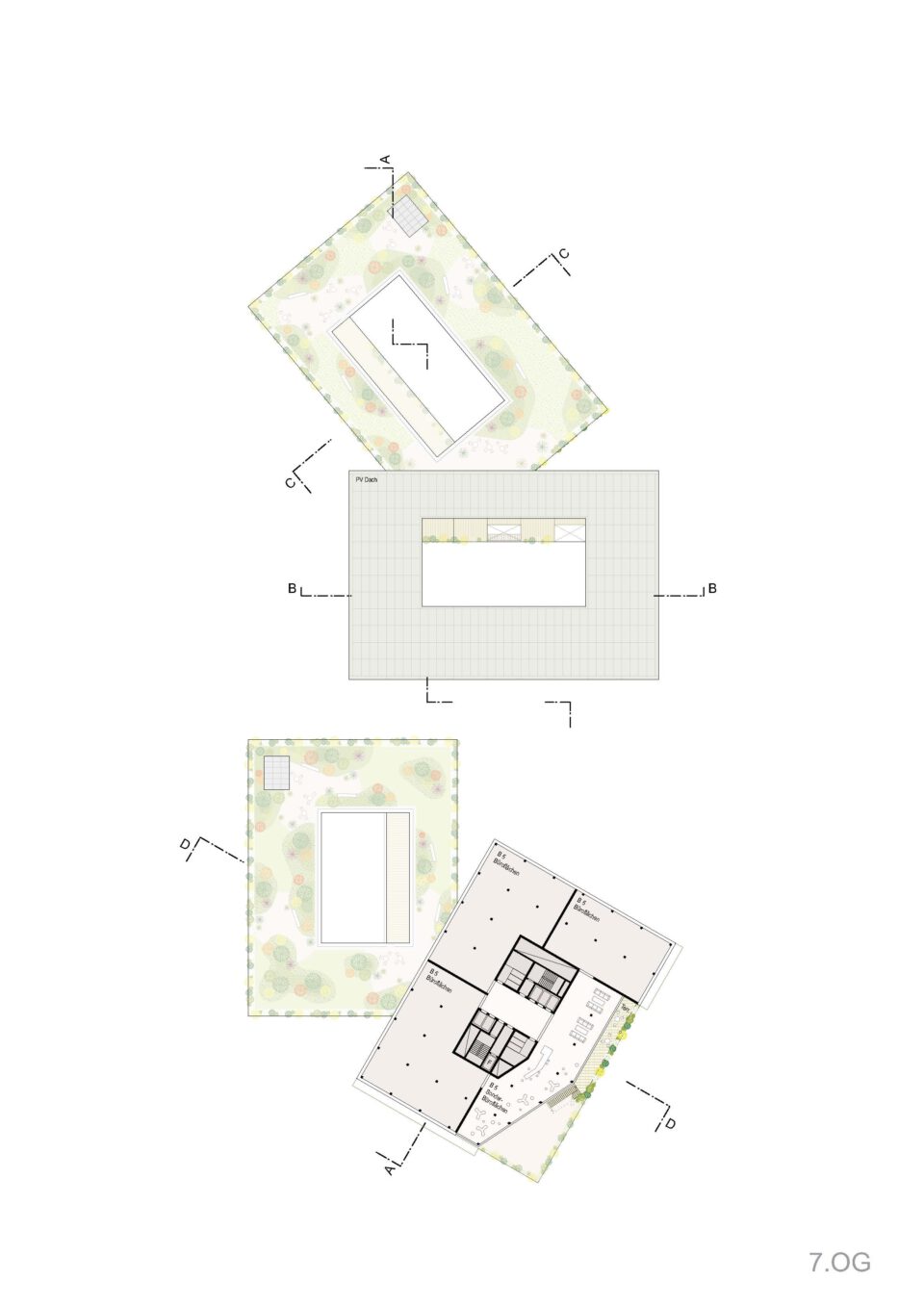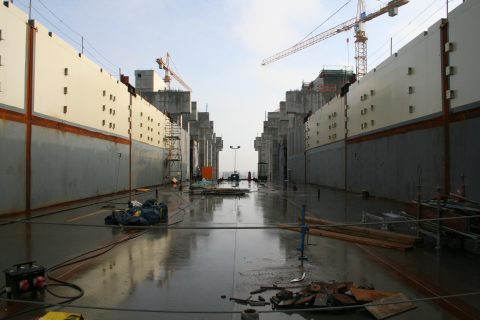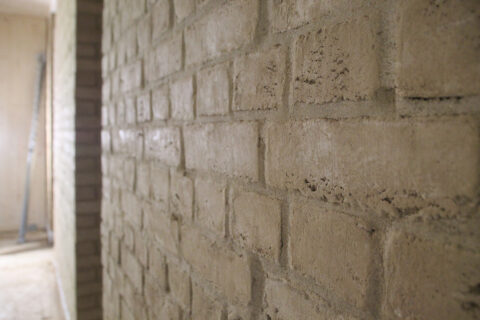The construction sector is one of the most resource-intensive sectors of the economy and is responsible for 55% of waste generation and 50% of resource consumption. The builder:in faced the question in advance of whether it is still permissible to build today. After an intensive process of consideration, the decision was made in favour of a resource-positive, sustainable new building. The design therefore consistently pursues a circular and space-reduced approach that can serve as a pioneer for other building projects far beyond the country’s borders. Reduction instead of consumption, saving building materials instead of emitting CO2, zero waste are just some of the guiding principles.
The use of CO2-positive, circular, unmixed, durable, robust, low-maintenance and low-emission building materials that can be reversibly joined, reused or returned to nature or recycled in a CO2-neutral way in addition to reused components (sanitary objects) or materials (waste wood), wherever this is technically, legally and economically possible, make the buildings CO2 sinks or component and material savers. The builder:in creates valuable raw material stores for future generations and no waste.
Resources found on the site (uncontaminated boulder clay, mineral components of the existing buildings) are recycled to a high standard and used for the new building. This reduces disposal costs and conserves resources. The BSR philosophy of zero waste manifests itself in a special way in the handling of existing buildings.
In order to build a resource-positive site, the renewable resource wood is used as a built CO2 sink in all solid building components. In order to build a resource-positive location, the renewable resource wood is used as a built CO2 sink in all solid building components, which are not subject to any special fire protection or building physics requirements. Climate-damaging, finite raw materials are thus substituted. The low dead weight and dry joining techniques enable direct reuse; the cascading use creates diverse product cycles. In the field of insulation materials, wood fibre products are replaced by fast-growing, annual CO2-positive plant fibres.


